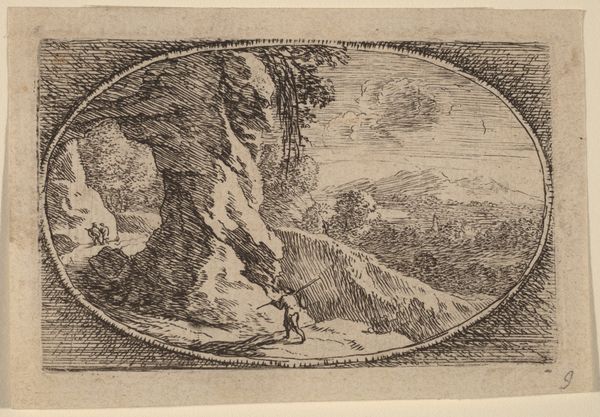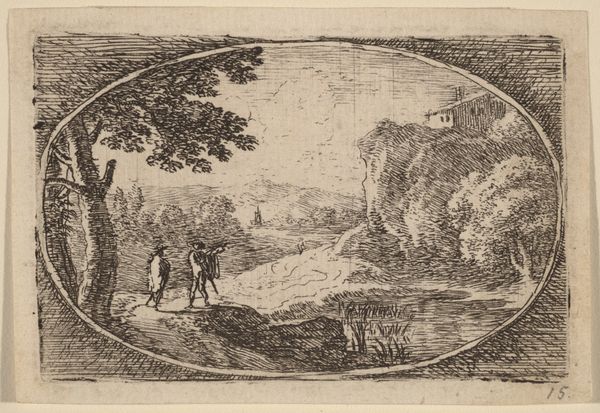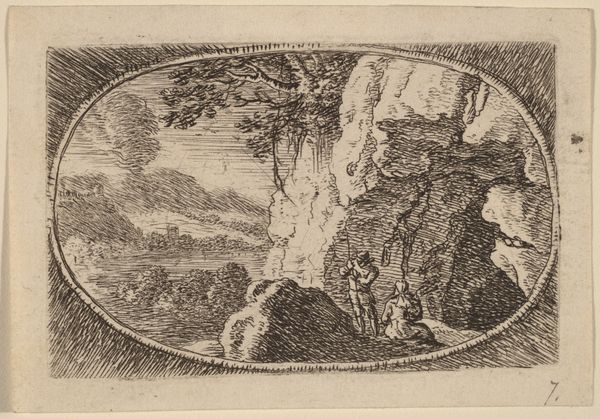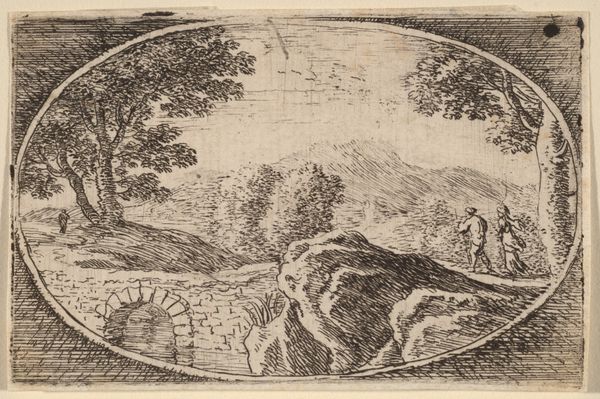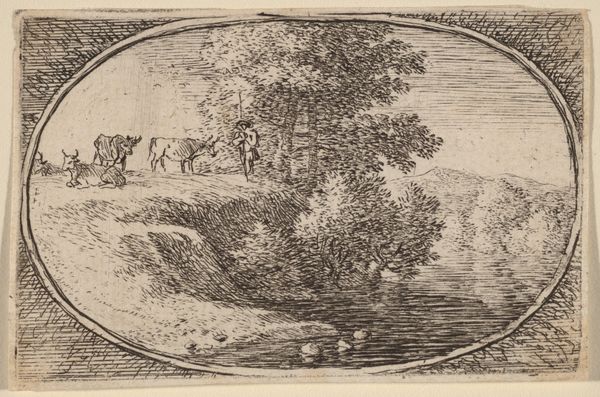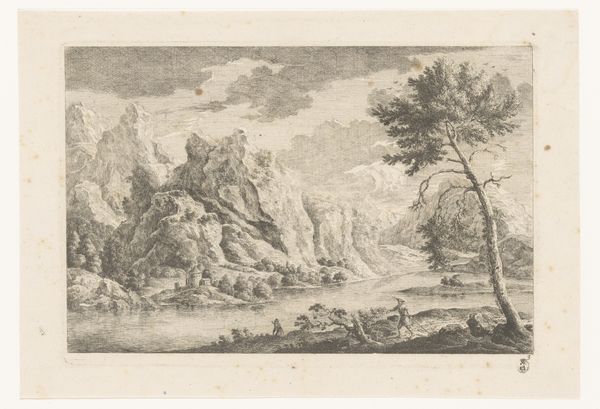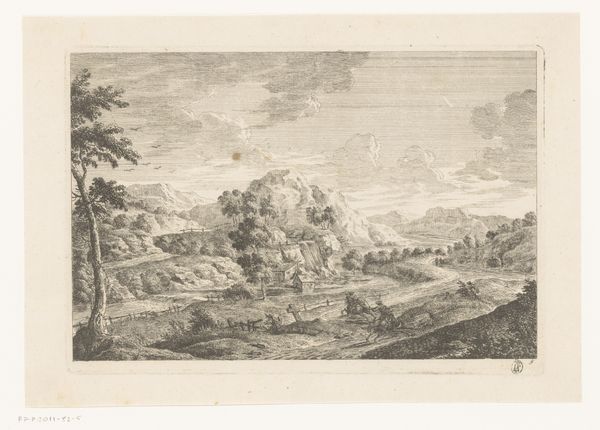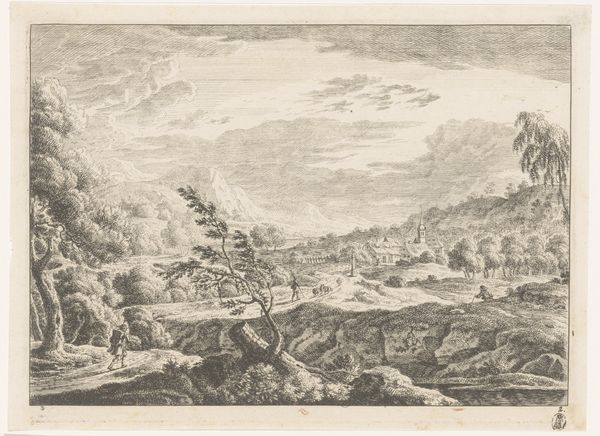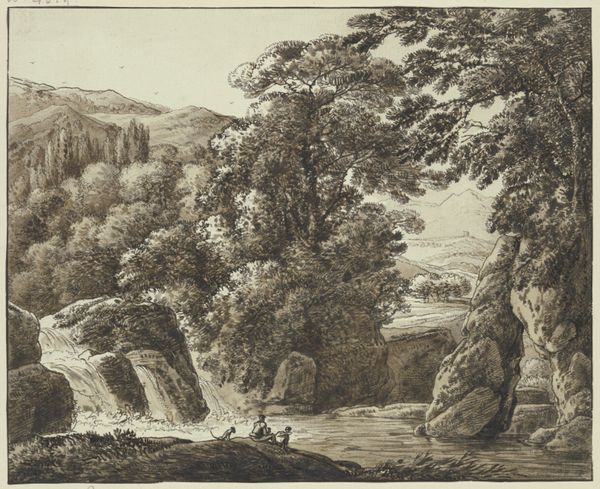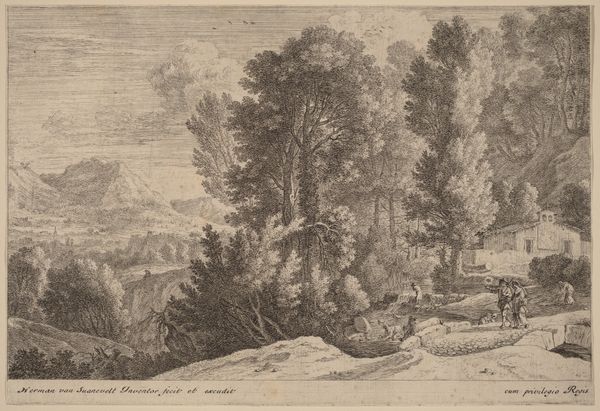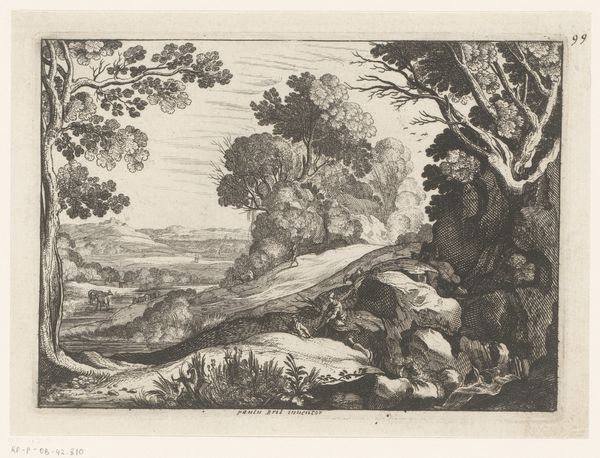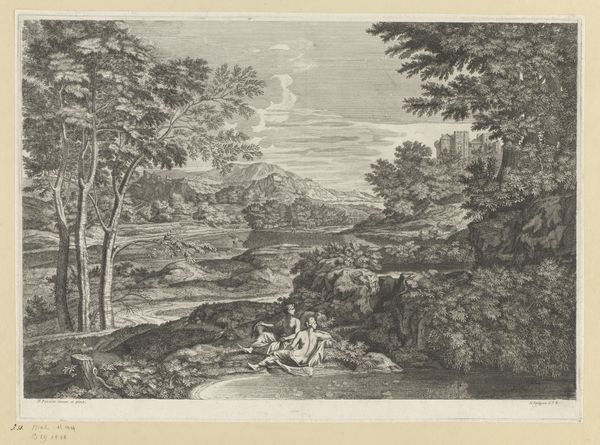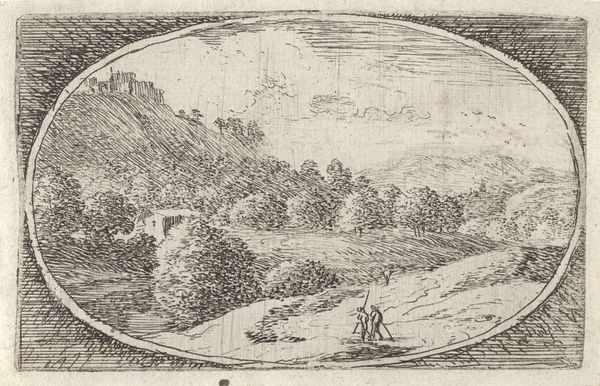
print, etching
# print
#
etching
#
landscape
#
figuration
Copyright: National Gallery of Art: CC0 1.0
Curator: We're looking at "Two Men on a Bare Hill," an etching by Herman van Swanevelt. Editor: The desolate setting strikes me immediately; the mood is introspective, almost melancholic. Curator: Notice how the composition, enclosed within that crisp oval border, directs our eye systematically from the lushness of the tree to the figures positioned atop the hill. The carefully orchestrated lines define form and create depth, no? Editor: Indeed, the formal devices guide our perception. But I am curious about *who* these men are. Are they simply travelers, or perhaps figures burdened by a world that offers no solace? I wonder, is this a subtle comment on the common plight during a time of conflict and widespread social change? Curator: A tempting interpretation. Still, focusing on the objective elements, we see a masterful demonstration of technique. Look at the subtle tonal variations achieved purely through the density and direction of etched lines. Editor: That's undeniable. It is a superb example of etching as a print medium. But I would push back, it also speaks to broader conditions in 17th-century Europe, namely issues around poverty, exile, and the increasing instability. Curator: Interesting, indeed. I was perhaps too swept up in my analysis of structure, composition and light, that I ignored some possible real-world commentary. Editor: Sometimes, letting context inform observation heightens our understanding of structure. We begin to see how art communicates more than its surface portrays. Curator: Point taken. Seeing van Swanevelt's work with both structure and possible commentary offers, I think, richer understanding. Editor: Exactly. With that in mind, hopefully, the experience enhances ours.
Comments
No comments
Be the first to comment and join the conversation on the ultimate creative platform.
